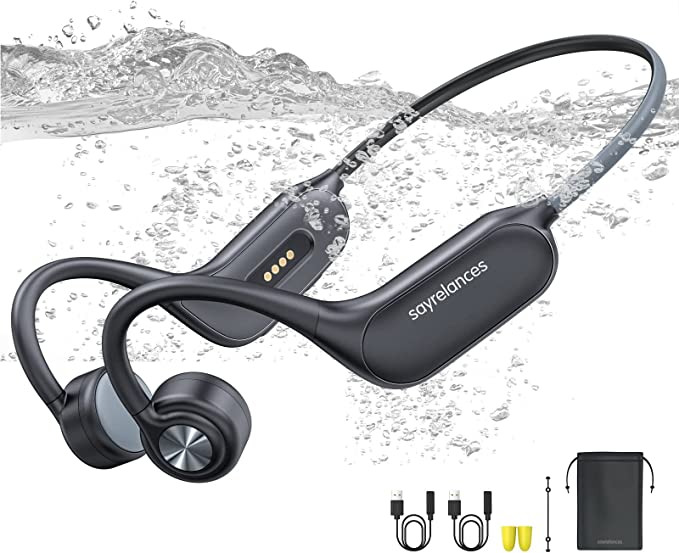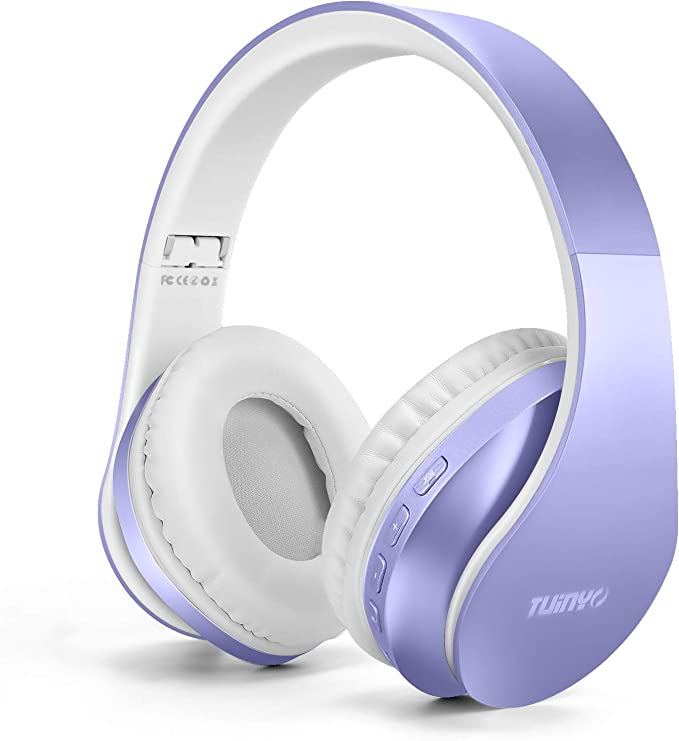For those who find their rhythm in the pounding of a C_CONTENT_STARTphalt, the splash of a pool, or the whir of a bicycle chain, music is often more than just a companion; it’s a motivator, a pacesetter, a private world of energy. Yet, the quest for the perfect audio accompaniment to an active life has long been a dance of compromises. Traditional earbuds can isolate us from our surroundings, a risky proposition on busy streets. Over-ear headphones, while immersive, often become cumbersome and sweat-logged. What if there was a way to experience rich sound without sealing off the world, a technology that whispers secrets directly to your senses? This is the promise of bone conduction, an auditory pathway reimagined for the modern mover, and embodied with multifaceted utility in devices like the sayrelances R20 PRO Bone Conduction Headphones. Let us embark on an exploration of the science, the history, and the sheer practicality woven into this intriguing approach to personal audio.

The Ancient Echo: Unpacking the Magic of Bone Conduction
Long before microchips and Bluetooth, the fundamental principle of bone conduction was, perhaps unknowingly, observed. Legend has it that Ludwig van Beethoven, as his hearing waned, discovered he could still perceive the notes of his piano by biting down on a metal rod pressed against the instrument’s soundboard. The vibrations, bypassing his damaged outer and middle ears, traveled directly through his jawbone to his inner ear. This “tactile sound” is the essence of bone conduction. While Beethoven’s method was rudimentary, it highlighted a fundamental truth: our bones can be excellent conductors of sonic energy.
Fast forward through centuries, and this principle found its place in specialized communication systems for aviators and military personnel, and significantly, in the development of certain types of hearing aids designed for individuals with conductive hearing loss. These devices demonstrated that sound didn’t always need the eardrum as its primary gateway.
So, how does this “magic” translate into a modern device like the sayrelances R20 PRO? Instead of tiny speakers directing sound waves into your ear canal like traditional headphones, bone conduction headphones employ transducers that rest gently on your cheekbones, just in front of your ears. When audio signals are fed to these transducers, they create subtle vibrations. Think of it like a miniaturized, highly sophisticated version of Beethoven’s rod. These vibrations travel through the bones of your skull – the zygomatic (cheek) and temporal bones – directly to the cochlea, the spiral-shaped organ of the inner ear responsible for converting mechanical vibrations into nerve impulses that the brain interprets as sound. Your eardrums are completely bypassed, remaining open and unobstructed.
The most immediate and profound benefit of this is situational awareness. Imagine cycling through a park; with the R20 PRO, you could be enjoying your favorite podcast while still clearly hearing the chirping of birds, the laughter of children, or, more crucially, the chime of another cyclist approaching from behind. This “open-world” audio experience is not just a novelty; it’s a significant safety feature, particularly for outdoor activities. It allows you to remain sonically connected to your environment, transforming your perception from an isolated bubble of music to a rich, layered soundscape. For some users, this approach also offers enhanced comfort, alleviating the pressure or irritation that can sometimes arise from prolonged use of in-ear devices, giving the eardrums a well-deserved “holiday.”

Aqua-Dynamic Audio: Conquering Water with IPX8 and Onboard MP3
For many, the idea of listening to music while swimming is a dream. The rhythmic monotony of lap swimming can be a mental hurdle, and a personal soundtrack could transform it into a meditative or invigorating experience. The sayrelances R20 PRO steps up to this challenge with a formidable combination of robust waterproofing and independent music playback.
At the heart of its aquatic capabilities is its IPX8 rating. Let’s decode this alphanumeric badge of honor. “IP” stands for Ingress Protection, a standard developed by the International Electrotechnical Commission (IEC) to classify the degree of protection provided by enclosures of electrical equipment against the intrusion of foreign objects (like dust, indicated by the first digit, where ‘X’ here means no specific dust rating is provided or tested for this particular aspect) and, crucially for us, water (indicated by the second digit). The ‘8’ in IPX8 signifies a very high level of water protection – specifically, the R20 PRO is designed to withstand continuous immersion in water up to 2 meters (approximately 6.6 feet) deep for a duration of up to two hours. This isn’t just about surviving a splash or a rain shower; it’s engineered for genuine submersion. Achieving this requires meticulous engineering: precision seals, a unibody design where possible, and the use of materials that resist water penetration. The inclusion of magnetic charging also plays a vital role here, as it eliminates the need for a physical port opening (like a USB-C slot) which can be a common point of water ingress if not perfectly sealed by a cap.
But why is robust waterproofing alone not enough for a great swimming audio experience? The answer lies in the physics of wireless signals. Bluetooth, the technology that wirelessly tethers most headphones to our smartphones, uses radio waves in the 2.4 GHz spectrum. These radio waves propagate wonderfully through air but are significantly attenuated – or absorbed and scattered – by water. Water is far denser than air, and its molecular structure effectively dampens these high-frequency signals over very short distances. So, even if your phone is just a few feet away on the pool deck, maintaining a stable Bluetooth connection to submerged headphones is often an exercise in frustration, if not outright impossibility.
This is where the brilliance of an onboard MP3 player comes into its own, and the R20 PRO boasts a generous 32GB of internal storage. This is enough space to hold an estimated 10,000 songs, transforming the headphones into a self-contained audio device. No phone needed, no unstable Bluetooth connection to worry about. You simply load your favorite tracks onto the headphones (which support a versatile range of formats including the high-fidelity lossless FLAC, alongside the common AAC, MP3, and WAV), switch to MP3 mode, and dive in. Imagine gliding through the water, each stroke accompanied by your perfectly curated playlist – it’s a genuinely liberating experience, turning a potentially monotonous workout into a private concert. The ability to choose your audio format also means you don’t have to compromise on sound quality, even when untethered and underwater.

The Unseen Current: Bluetooth 5.3 and the Flow of Wireless Sound
While the MP3 player handles aquatic duties, for all terrestrial activities – from a morning jog to a lengthy cycling session or a gym workout – the sayrelances R20 PRO relies on Bluetooth 5.3. Bluetooth technology itself has come a long way since its inception in the late 1990s as a short-range cable replacement technology. Named after the 10th-century Danish king Harald Bluetooth, famed for uniting disparate Danish tribes, the technology aimed to unite different devices wirelessly. From those early days of connecting a wireless mouse or a basic headset, Bluetooth has evolved through numerous iterations, each bringing improvements in speed, range, power efficiency, and connection stability.
Bluetooth 5.3, one of the more recent iterations, continues this trajectory. While specific performance can vary based on implementation and the paired device, Bluetooth 5.3 generally offers enhancements in connection reliability, potentially faster pairing times, and improved power efficiency compared to older versions. This means that when you’re out on a run, you’re more likely to experience a stable, uninterrupted audio stream from your phone or smartwatch, with fewer annoying dropouts. It’s the silent workhorse ensuring your music or podcast flows as smoothly as your stride. The R20 PRO leverages this for a dependable wireless link, supporting a variety of Bluetooth-compatible devices, including tablets and both iOS and Android smartphones, making it a versatile companion for a wide array of land-based activities.
More Than Meets the Eye (and Ear): Thoughtful Enhancements
Beyond the core technologies of bone conduction, waterproofing, and connectivity, the Sayrelances R20 PRO incorporates several features that underscore a commitment to user safety, comfort, and practicality – elements that often elevate a good piece of technology to a great one.
A standout feature, especially for those who embrace an active lifestyle before dawn or after dusk, is the integrated night light. This isn’t just a token LED; the R20 PRO offers three distinct lighting modes, providing an added layer of visibility. The science of visibility is straightforward: in low-light conditions, a moving light source is significantly more conspicuous to motorists, cyclists, and other pedestrians than static reflective gear alone. This small addition can be a crucial safety enhancer, offering extra protection and awareness when you’re sharing paths or roads in the twilight hours. It’s a thoughtful inclusion that speaks directly to the safety concerns of runners and cyclists.
Comfort during extended wear is paramount for any sports headphone, and the R20 PRO addresses this through its lightweight design, tipping the scales at a mere 32.5 grams. This minimal weight, combined with the open-ear nature of bone conduction, means less pressure and fatigue on and around the ears. The frame itself showcases impressive material science, capable of 360-degree bending without deformation. This flexibility not only contributes to a comfortable, adaptive fit (further aided by an included adjustment strap) but also speaks to the headphones’ durability, making them resilient enough to be tossed into a gym bag or withstand the rigors of active use. The design aims for that “barely there” feeling, allowing you to focus on your activity rather than the equipment you’re wearing.
Finally, the practicalities of daily use are rounded out by its battery performance and charging mechanism. Offering up to 8 hours of music playback or call time on a full charge, the R20 PRO is designed to last through most workouts or even a full day of intermittent use. The standby time of up to 200 hours means it won’t be dead when you reach for it after a few days of inactivity. And when it does need a power boost, the magnetic charging system offers a user-friendly experience. The cables (two are thoughtfully included) snap satisfyingly into place, ensuring a secure connection and, as mentioned earlier, contributing to the overall water resistance by eliminating an open port. A full charge is achieved in approximately 1.5 hours, minimizing downtime.

Coda: The Symphony of Technology and Active Living
The sayrelances R20 PRO Bone Conduction Headphones are more than just a collection of impressive specifications; they represent a carefully orchestrated symphony of technologies designed to harmonize with an active, engaged lifestyle. From the foundational magic of bone conduction that opens your ears to the world, to the IPX8 waterproofing and MP3 integration that invite music into the aquatic realm, and the reliable Bluetooth 5.3 connectivity for your land-based adventures, every feature appears thoughtfully considered. Additions like the safety night light and the focus on lightweight, durable comfort further underscore a user-centric design philosophy.
In an age where technology can sometimes feel isolating, devices like the R20 PRO aim to do the opposite: to enhance our engagement with our surroundings and our activities, safely and enjoyably. It’s a testament to how human-centered engineering can transform a simple gadget into a valuable enabler of personal well-being, allowing you to compose your own unique soundtrack to a life in motion. The future of personal audio is indeed open, and it sounds, and feels, remarkably liberating.



